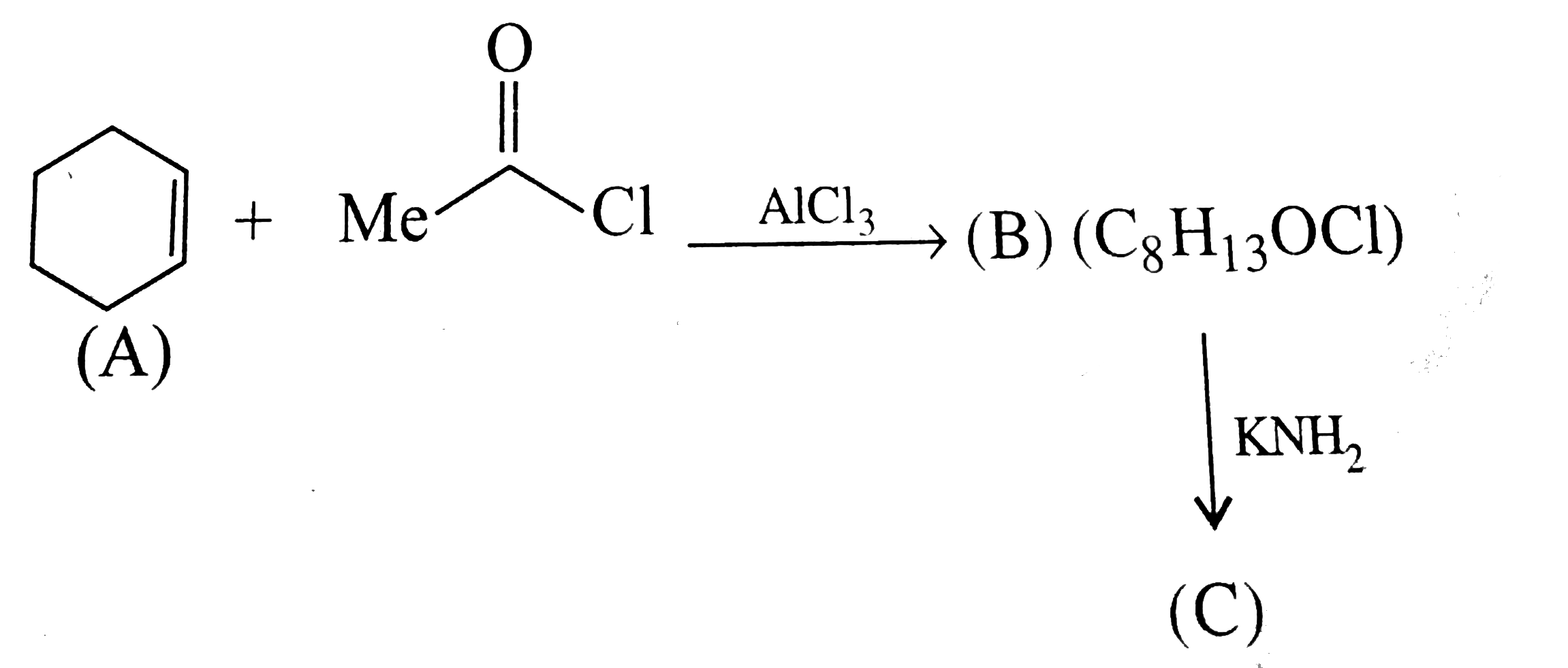
Compound (B) is:
A

B

C

D

Video Solution
Text Solution
The correct Answer is:A
|
Topper's Solved these Questions
- ALIPHATIC AND AROMATIC ALDEHYDES AND KETONESBook:CENGAGE CHEMISTRYChapter:ALIPHATIC AND AROMATIC ALDEHYDES AND KETONESExercise:Exercises Multiple Correct
Explore 40 Videos
- ALIPHATIC AND AROMATIC ALDEHYDES AND KETONESBook:CENGAGE CHEMISTRYChapter:ALIPHATIC AND AROMATIC ALDEHYDES AND KETONESExercise:Exercises Single Correct
Explore 72 Videos
- ALIPHATIC AND AROMATIC ALDEHYDES AND KETONESBook:CENGAGE CHEMISTRYChapter:ALIPHATIC AND AROMATIC ALDEHYDES AND KETONESExercise:Exercises Concept Application
Explore 20 Videos
- ALCOHOL,PHENOL AND ETHERSBook:CENGAGE CHEMISTRYChapter:ALCOHOL,PHENOL AND ETHERSExercise:Archives Analytical And Descriptive
Explore 15 Videos
- AMINESBook:CENGAGE CHEMISTRYChapter:AMINESExercise:QUESTION BANK
Explore 1 Video
Similar Questions

Compounds (B) and (C) respectively are:
View SolutionStatement I: Trimethyl ammonium hydroxide (compound A) is a weaker base compared to tetramethyl ammonium hydroxide (compound B) .
Statement II : The release of OH− from (compound B) is faster than that from (compound A) due to presence of hydrogen bonding in (compound A) and absence of such bonding in (compound B).
View Solution
Knowledge Check
An organic compound (A) reacts with methyl magnesium iodide to form an addition product which on hydrolysis forms the compound (B). Compound (B) gives blue colour salt in Victor Meyer's test.The compounds (A) and (B) are respectively :
Aacetaldehyde, tertiary butyl alcoholBacetaldehyde, ethyl alcoholCacetaldehyde, isopropyl alcoholDacetone, isopropyl alcoholA compound (A) is formed by the reaction of ethylene with bromine which on reacting with aqueous KOH gives a compound (B). The compound (B) can also be prepared by the reaction of ethylene with the following:
ABaeyer’s reagentBOxygen in the presence of silver catalyst and then acidic hydrolysisCperformic acid and the product undergoes acidic hydrolysisDAll of the aboveAn organic compound A reacts with methyl magnesium iodide to form an addition product which on hydrolysis forms the compound B. Compound B gives blue colour salt in Victor Meyer's test. The compounds A and B respectively are
Aacetaldehyde, t-butyl alcoholBacetaldehyde, ethyl alcoholCacetaldehyde, iso-propyl alcoholDacetone, iso-propyl alcohol
The compound (A) in the previous question is further hydrolysed in dilute acidic medium to give compounds (B) and (C). The compounds (B) and (C) are :
View Solution
Compounds (B) and (C) are:
View Solution
Compound (B) and (D) are, respectively :
View Solution
The compound (B) and (C ), respectively, are:
View Solution
Compounds (B) and (C) are :
View Solution


